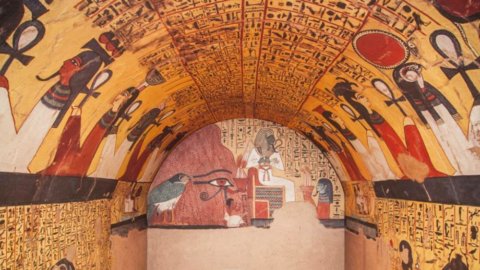The reconstruction of Pashedu's tomb, presented by Cultour Active, is a true masterpiece, designed and created by the expert hands of Gianni Moro, a craftsman from Motta di Livenza who worked alongside Egyptologists in Cairo and the Egyptian Museum in Turin.
With a structure measuring 5 meters by 2,50 metres, it faithfully reproduces the burial chamber, the relative access corridor and the meticulous paintings on the walls, found in the necropolis of Deir el-Medina. Deir El Medina, in fact, was the village that housed the families of artisans and artists involved in the construction and decoration of the pharaonic tombs of the Valley of the Kings.
Pashed or Pashedu (artisan in the garden of the pharaohs), whose name means the Saviour, lived in the XNUMXth century BC and was the foreman of one of the groups of workers who built the great royal burials.
From the funerary equipment found in his burial are preserved a papyrus-book of the dead today in the British Museum in London, a stele in the Cairo Museum and a relief in the Egyptian Museum in Florence.
In Padua, in the collection of the Archaeological Museum, there is instead an ushabti (statue that reproduced the deceased and who had to work for him in the afterlife in the fields of Osiris) which comes from Deir El Medina, the village where Pashedu lived and was buried , and which corresponds to a similar ushabti now preserved in the Egyptian Museum of Turin. The Egyptian collection of the Paduan Museum also therefore offers surprising insights.
The exhibition of Pashedu's tomb will be accompanied by a series of fundamental panels to contextualize the burial and to deepen the links between Padua and ancient Egypt. Texts and iconographic research are by the Egyptologist Claudia Gambino (University of Padua), of the Egypt Veneto Team. Thanks to the Egypt-Veneto Project in recent years, a very rich heritage of Egyptian and Egyptian-related artifacts has been brought back into the right light in museums in the region, including the Paduan one.





